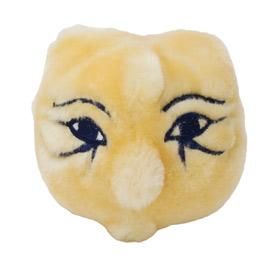West Nile (West Nile Virus)
Product Details
Additional Information
| Sizes | Giantmicrobes are based on actual microbes, cells, organisms and other critters, only 1,000,000 times actual size! Gigantic (GG) 40-60cm XL (XL) 25-38cm Original (PD) 12-20cm Minis (MM) 5-10cm each Keychain (KC) 5-10cm with clip |
|---|---|
| Materials | Plush from all new materials. Stuffed with polyester fiber fill. Surface washable: sponge with water & soap, air dry. |
| Packaging | Each plush microbe includes a printed card with fun, educational and fascinating facts about the actual microbe or cell. |
| Safety | Every product meets or exceeds U.S. and European standards for safety. For ages 3 and up. |
All about West Nile (West Nile Virus)
FACTS: West Nile virus is a mosquito-borne illness primarily found in Africa, West Asia, and the Middle East. It was first identified in Uganda in 1937 on the west side of the White Nile, one of the two tributaries of the Nile.
In recent years, the virus has been methodically spreading around the globe. But while West Nile outbreaks regularly attract a flood of media attention, about 80% of infected people experience no symptoms at all. Most of the rest experience flu-like symptoms, or West Nile fever, often accompanied by skin rashes on the chest and back.
However, in certain cases (less than 1%), West Nile virus penetrates the tissue in or around the brain and spinal cord, causing encephalitis and meningitis. In these rare instances, West Nile virus can cause paralysis, convulsions, coma, and even death.
While West Nile virus can infect many animals (its impact on horses is commonly cited), it most frequently afflicts birds – and the presence of dead birds in a community can be a harbinger of a West Nile virus outbreak. But mosquitoes are responsible for transmitting the virus from birds to humans, and as a result some communities institute mosquito control measures after warning signs appear. Reporting dead birds to public officials can help contain the threat posed by West Nile virus.
Nevertheless, it’s wise to take extra precautions to avoid all mosquito bites during outbreaks – knowing which mosquitoes are infected is like solving the riddle of the sphinx.
| Where It Lives | The West Nile Virus is spread through infected mosquitos |
|---|
| System | If the virus is severe enough it will attack the central nervous system |
|---|
| Commonality | West Nile occurs in most states within the U.S. |
|---|
| Symptoms | Many people will not show any symptoms. Mild infections can cause fever and headache, this type of infection is referred to as West Nile fever. Serious infections attack the brain and spinal cord and can lead to permanent problems |
|---|
| Cure | Most people that get the virus recover without any treatment. Over the counter medications are used to help the mild symptoms |
|---|
| Deadliness/Severity | 1% of people that get West Nile virus get a severe infection |
|---|
| Infectiousness |
The disease is spread to humans and animals through the contact of infected mosquitos Infection cannot spread from an infected person to a healthy person |
|---|
| History |
1937 was the first time the virus was recorded, this took place in Uganda, Africa West Nile was first recorded in the United States in New York in 1999 It wasn’t until 2002 that there was another large outbreak |
|---|
| Fascinating Facts |
• Most cases of the virus occur in the United States from June to September, warm weather months • Mosquitos contract the disease by feeding on infected birds • The only states that have not had reported cases of West Nile are Hawaii and Alaska • 2002- the largest outbreak occurred in Africa • 4156 cases overall, including 2354 cases of meningoencephalitis (the most ever seen in the western hemisphere!) and 284 deaths |
|---|






